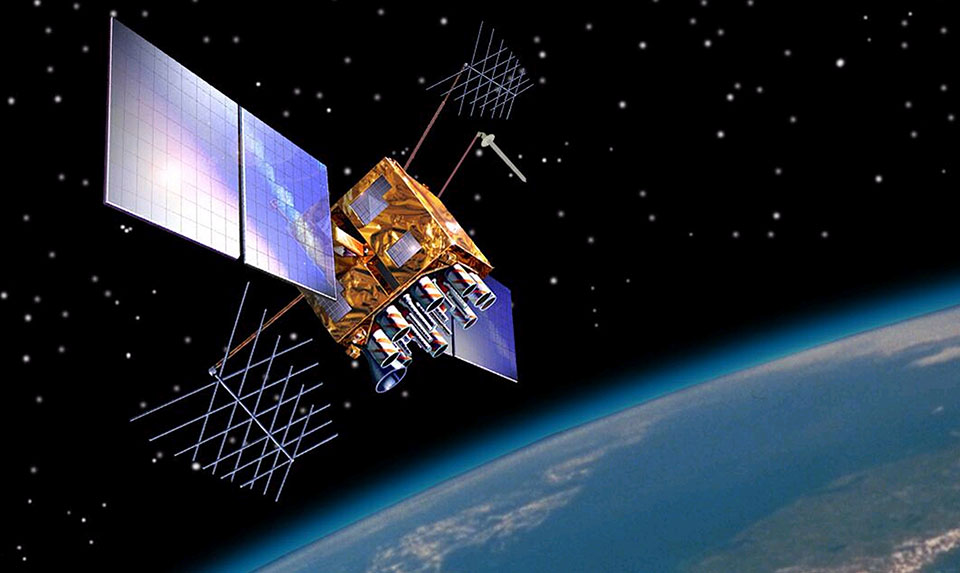By Dr Jessica West

GPS signals that guide civilian aircraft in the Middle East and Ukraine are being jammed and spoofed, diverting flights and risking the safety of all onboard. Meanwhile, diplomats from 25 countries met again in Geneva to consider possible elements of a legally binding agreement to prevent an arms race in outer space (PAROS). Both situations arise from decades of unsuccessful diplomatic attempts to ensure that outer space – a shared, global environment on which the entire world depends – remains peaceful and available to all.
How do we save outer space for future generations?
- Acknowledge that a race for weapons in space is a problem.
Over the last four decades, Western states have limited their focus to ground-based missiles capable of striking orbiting satellites. These missiles are a significant threat: four destructive tests of such systems have been conducted since 2006, the most recent by Russia in 2021. These tests have not only fed perceptions of insecurity that drive arms racing but have produced clouds of space debris capable of damaging or destroying space objects. But this is not the only concern. Additional threats to space include electronic jamming and spoofing, cyber intrusions and attacks, other kinetic weapons capabilities embedded in dual-purpose technology, and directed energy. And these weapons are not only on Earth. The science fiction of space-based weapons is becoming a reality.
The biggest obstacle remains political: states must choose mutual restraint.
The United States has accused Russia and China of developing and testing weapons systems in orbit, positing that historically benign capabilities such as robotic arms are de facto weapons. And although Western states remain wary of diplomatic efforts to prevent a looming arms race in space, they are preparing their militaries for this race. Consider the escalation of orbital capabilities intended to defend space systems, including bodyguard satellites and defensive patrols. Increasingly, such defence includes offensive capabilities – classic arms racing.
Now that the increasingly complex problem is defined, what’s next?
- Acknowledge that we can do something about it but choose a new approach that builds on past lessons.
The most important: there is no single solution.
The latest round of closed-door diplomatic discussions is predicated on a draft treaty aimed at preventing the placement of weapons and the use of force in outer space. First proposed by Russia and China in 2008, its roots go back to the 1980s and the phantom menace of space-based missile defence. However, while it’s time to accept the merit of restricting potential weapons systems in orbit, the draft proposal is out-of-date.
Western states are concerned by the absence of treaty definitions for the specific “weapons” to be banned and the lack of consideration on how to verify such a ban. The proliferation of harmful capabilities and activities – including many that fall below what might be considered ‘force’ – creates more concern. Meanwhile, states are warily watching the lead sponsors of the treaty pursue what seem to be the types of capabilities the treaty would ostensibly ban.
So how DO we keep space safe from weapons, wherever they’re situated?
- Accept that many steps are needed to reach our goal.
A study by Project Ploughshares of relevant lessons from other areas of arms control suggests merit in starting with small, practical measures. Such an approach to anti-satellite (ASAT) weapons tests is now taking shape. In 2022, the United States committed to a unilateral moratorium on destructive testing; it has since been joined by 37 states. The next steps could include a legal agreement, modelled after restrictions on nuclear weapons tests in the Partial Test Ban Treaty. Such a step doesn’t end arms racing, but it’s a move in the right direction.
Preventing an arms race in outer space must also involve attention to the growing range of orbital capabilities. Such attention might include one or more legal agreements that bar particularly egregious capabilities and activities in space, such as kinetic destruction or targeting Earth. But it must also include a range of other types of agreements, tools, and mechanisms used to form a comprehensive regime for peace and security in outer space. Included should be measures that mitigate the insecurities that drive arms racing by making actions in space more transparent, nurturing communication, and protecting civilian users and other essential capabilities from harm. Also possible are further restraints on missiles. Many of these measures were discussed at the recently concluded Open-Ended Working Group on Reducing Space Threats (OEWG). While such pieces can be put into place over time, they cannot be treated as afterthoughts.
What critical step remains?
- Establish the ability to answer the question: how do we know?
While no agreement is fully verifiable, parties to any agreement must have sufficient proof to be confident that fellow members are abiding by their commitments. Such confidence is particularly hard for actors in outer space to achieve; not only are actions and capabilities faraway, but space tech can often support multiple uses and intentions, both benign and harmful. The resulting uncertainty can drive the emerging arms race in space.
Final thoughts
The Ploughshares study recommends a layered approach. Begin with practical steps: rein in the most offensive and obvious weapons capabilities; encourage greater clarity on how other space capabilities and activities are being pursued; and institute channels of communication, consultation, and coordination.
The science fiction of space-based weapons is becoming a reality.
The biggest obstacle remains political: states must choose mutual restraint as a path to sustained peace. Such restraint never seems urgent, until it is. And then, when some harm is inevitable, it is likely to be human activities on Earth, including those of civilians, that suffer the worst fate.
This article was initially published on Ploughshares and it can be found here.

Dr Jessica West leads research to advance peace and security in outer space through a humanitarian focus on space for all and benefits to people and the planet. As part of this work, she interacts regularly with key United Nations bodies tasked with space security and space safety issues. Related research interests include approaches to peace and disarmament rooted in humanitarian protection and gender perspectives, as well as the impact of new technologies on space security such as cyber connectivity and artificial intelligence. Jessica holds a PhD in global governance from the Balsillie School of International Affairs where her work focused on linkages between resilience, national security, and public health. She currently holds roles as a Research Fellow at the Kindred Credit Union Centre for Peace Advancement, and a Senior Fellow at the Centre for International Governance Innovation (CIGI).





